- Home
- Neal Asher
Orbus Page 23
Orbus Read online
Page 23
The big hydraulic clawjack, having slid across the Sanctum to knock him from his pit controls, has trapped him against one wall. If he tries to push it away, the assister motors in his armour will cut in, immediately alerting those other things aboard to his presence in the network. He just has to hope that the hydraulics of the manual fast-eject routine will be up to the task. Probing with his mandibles into the pit controls within his armoured turret, he initiates the routine. The top half of his armour pushes out, against the wall, whilst lubricant flows around his limbs. This sets the hydraulic jack sliding away from him, then, as the lid of his armour hinges up, the jack topples over with a resounding crash. Compressed gas throws Vrell out as his armour thumps down flat. The edge of his carapace hits the wall and he turns, but by chopping a claw against the same wall, he rights himself and comes down on his feet. At once he reaches down, grabs hold of the control units bonded to his shell and yanks them free, sending them skittering away from him.
‘Drone,’ he instructs, in the Prador language now because his translator is part of the armour. ‘Destroy my armour.’
The drone has secured himself in the doorway to the Sanctum, wrapping some of his tentacles around the Old Captain whilst using the rest to prevent both of them being thrown about. Sniper’s tentacles now unwrap from the Human and send him sprawling.
‘Why?’ Sniper asks, in the same clattering, bubbling speech.
‘Controlled by dangerous intelligence,’ Vrell clatters back.
Just then the suit begins moving, tentatively stretching its limbs and snapping closed one claw. The lid begins to close.
Before Vrell can say anything more, Sniper shoots into the air and, with a loud crackling, spits a stream of missiles straight down inside the armour. A series of detonations blows free the hatch, so it slams against the ceiling. With a bright fire burning inside it, the armour tries to right itself and turn, just as Sniper crashes into it, tentacles entwined around its limbs, his face directly into the flames. His particle beam stabs out next, and gobbets of molten metal spit out around him as the interior of the armour turns blast-furnace hot. Vrell sees the drone has focused the beam directly on the internal location of the CPU. The armour struggles to right itself, then for a moment the colour of internal flame flashes bright red, and it slumps. Sniper releases his hold and rises again, hovering in the air, tentacles twitching.
Vrell has no time to feel gratitude, for now he is running out of breath. With his body mutated and interlaced with the Spatterjay virus, anoxia will not kill him. However, it might cause further mutations and, knowing what he knows now, that is not a prospect he relishes. He scans all about to see the deck lying tilted, and chunks of superstructure protruding through it like shattered ribs, but what catches his attention is a frost on some surfaces, indication of an atmosphere breach.
‘What is controlling that armour?’ Sniper asks in Prador speech.
Vrell ignores the question and points at one of the storage alcoves. ‘Blow that door.’
Sniper drops down beside the storage alcove indicated, grabs protrusions in the wall surrounding it, inserts tentacles and simply tears the door off. Vrell watches this with a degree of chagrin. He has seriously underestimated this Sniper, in fact he should have ejected the drone from this ship at the first opportunity. However, circumstances have changed and now the drone’s presence might even prove welcome. Sniper reaches inside the alcove and drags out a Prador harness incorporating integral breather unit, com hardware and numerous little niches for numerous weapons.
‘This what you want?’
‘Yes,’ Vrell replies, moving forwards.
‘Then I am going to need a bit more detail.’
By now the Old Captain is on his feet and saying something. Vrell listens to it for a moment, simply not realizing he is understanding, then something clicks in his major ganglion. His earlier encounters with Humans, on many levels, and his recent use of a translator have provided all the data his enhanced intelligence needs. He now understands the Captain perfectly.
Orbus has just said, ‘What the fuck is going on?’
Vrell is not equipped with the vocal apparatus to provide him with an answer.
‘That’s what I’m trying to figure out,’ says Sniper, giving the harness a shake.
‘Something hostile has taken control of the Guard,’ Vrell states.
‘What did he say?’ asks Orbus.
Sniper ignores the man. ‘Something from that attacking ship, then. How did it penetrate your security?’
‘I do not know, but logic dictates that this is the case,’ says Vrell. But, even as he says it, Vrell does not want to admit to himself that, though all the evidence seems to confirm his supposition, he does not feel it to be true. He cannot shake off the feeling that the source of the alien code lies inside each suit of armour.
‘What’s that?’ Orbus demands.
‘Somehow,’ Sniper tells him, ‘the attacking craft has managed to take control of those suits of armour.’
‘How?’ asks Orbus.
‘Who cares?’ Sniper tosses the harness to Vrell. ‘We’re in big trouble, however you cut it.’
Vrell initiates the harness CPU, but with the com function shut down, then checks readouts in the mask to be sure nothing has invaded it, before quickly donning the equipment.
‘So what’s the plan now?’ Orbus asks Sniper.
‘Beats me,’ the big drone replies. ‘You got any ideas, Vrell?’
Vrell eyes the two of them and can think of no reply. The dreadnought came down hard and will not be going anywhere for a long while, especially now his previous workforce lies beyond his control. Perhaps they can stay aboard and fight, but he needs time to formulate some method of attack–time he suspects he will not be allowed by the alien-controlled Guard.
‘Did you recognize that attacking ship?’ Vrell asks, now using a translator.
‘Nope,’ says Orbus, glancing at Sniper. ‘We thought you might be able to tell us about it, because obviously whatever is aboard it has an overwhelming interest in you. Could it be King Oberon sent it?’
‘If it was the King, then why did it not destroy me when given the chance?’
The Human shrugs and his expression changes in ways Vrell cannot read. The drone remains as inscrutable as ever. The only way Vrell could know whether they are telling the truth would be to take them both apart and read the information directly from their minds, which is not an option at this moment. He shakes himself, and abruptly moves back over to his pit controls and array of screens. Many of the controls have been damaged by the sliding clawjack, and a lot of the screens are out but, inserting his claws and underhands, he finds some controls he can still use.
As yet there seems no corruption in the instruments and data available to him here, and what he now finds is both awesome and frightening.
‘The Guard are on the move,’ he says at last. ‘They first broke into food caches located throughout the ship, and are now securing critical areas. All the remaining fusion reactors are out of my control, as are the main weapons and force-field defences.’ He studies a screen which shows two members of the Guard taking apart a hardfield projector. They are moving with the kind of speed he has only ever seen achieved by sophisticated robots. Vrell takes a moment or two to mull this over. How can he fight something like this? As he is witnessing, the Guard can now move horribly fast and are rapidly removing the ship from his control. Even as he studies the screens, internal security systems go down and blocks of computing space are hijacked.
Abruptly coming to a decision, he calls up one of the remaining security programs–one created by Vrost and held in reserve–and initiates it. Screens begins to blink out one after another as a destructive power surge sweeps through all the internal ship eyes and scanners, burning them out. He then inspects a screen which briefly gives him a view outside the ship before it too winks out. It shows a great segment of the attacking ship now landing ten miles away across the icy plain.
‘The area of this ship you first entered after boarding is presently unoccupied,’ Vrell observes, whilst removing his claws and underhands from the pit controls, as some more screens blink out and others begins running weird writhing patterns. He backs away and turns, heading over to the alcove storage. In there he quickly begins selecting items and affixing them to his harness: a particle cannon, a rail-gun, further power supplies, oxygen, grenades and a selection of mines.
‘We gonna hide?’ Sniper wonders.
‘I intend to hide and then to watch,’ Vrell replies, turning and rapidly moving up beside the drone, to peer out into the corridor beyond. ‘Since part of the attacking ship is now landing outside, it seems likely its occupants might be heading here. That might present some…opportunities.’
‘There might be another option,’ suggests Orbus. ‘It might be possible to call in the Gurnard?’ He goes over and picks up the weapon Vrell took from him earlier, plugging its leads back into his suit.
‘Yes…possible,’ Vrell acknowledges, as he steps out into the corridor.
Almost mirroring him, one of the Guard steps into view at the far end of the corridor, its shape now oddly distorted and its armour taking on a blue hue, and with blinding speed swings a rail-gun round to bear. Everything seems to shudder into nightmare slow-motion for Vrell. As he swings up his own weapon, he just knows he is not moving fast enough. He can normally get the drop on any Prador, or Human, or on any living thing he has previously encountered, but this thing moves as fast as a machine. His senses heightened to pinpoint and painful clarity, he sees the rail-gun aimed precisely at his unprotected mouth, and the Guard’s claw simultaneously closing to fire it, whilst his own weapon is only halfway up towards firing position. Then a missile streaks past, its passage noted only by the subliminal flicker of a black line sketched across the air. Perfectly targeted, it enters the barrel of the Guard’s rail-gun and detonates. Even as the explosion disintegrates the weapon, and part of the claw holding it, throwing the Guard backwards, Sniper slides in front of Vrell and continues firing. The war drone is thrown into abrupt silhouette by sun-bright explosions, as it turns the far end of the corridor into a furnace.
‘Run,’ Sniper advises.
Vrell spins round and, with Orbus falling in behind him, heads at high speed for the opposite end of the corridor. Then, obeying instinct, he abruptly flings himself sideways and clambers up the wall, both his weapons pointing towards his destination. One of the Guard shoots into view, and its rail-gun swings up already targeting Orbus before the Old Captain has a chance to react. A stream of projectiles slams into the Human, but amazingly he stands his ground, with shattered metal ricocheting from the front of his suit. Vrell aims carefully and fires both his weapons, targeting power supplies, and the Guard is lifted up on an explosion that finally flings Orbus to the floor. Yet, even as this particular Guard’s rail-gun sputters out, and it rises amidst the blast, another of its kind is appearing behind it.
‘The wall,’ Sniper sends over com.
Vrell flings himself from one wall to the other, then down on to the floor. The drone turns, twin-particle cannon beams stabbing out and cutting a hole through the corridor wall, even while his launcher turns like a chameleon eye and spits missiles straight down the corridor, past Vrell. Vrell feels a series of impacts in his back and sees one of his own legs go skittering past him. Rail-gun missiles racket off the wall beside him, then firing ceases upon the two detonations behind. Ignoring the pain, he surges forward as a great chunk of the wall falls through. He grabs up Orbus as he goes, not quite sure why, and, as he flings himself through, slaps two proximity mines on the floor. Sniper follows, his thinking much the same as he too sticks some device beside the hole.
Vrell falls twenty feet into a long cylindrical room through which run numerous power ducts and pipes. Scattered along its length are the huge pumps that keep all areas of the ship supplied with water and various necessary gases. He quickly inspects these, then pain surges up from his claw as it is wrenched open. Vrell has almost forgotten he is still carrying Orbus, and drops him like an unpleasant insect.
11
Unlike the independent drones produced throughout the war, or those AI subminds that sometimes either buy or are given their own independence, the security drone for ever remains part of an integrated security system. This is because its mind, on its own, is not actually an artificial intelligence. In any exchange, conversational or informational, with one of these machines, it would seem to be an independent entity, but it is not. The security system itself is the AI (usually the submind of a larger AI), but of a format similar to that of an intelligent hive of social insects. Such machines are just not complex enough to either deliberately or inadvertently build sufficient ego within themselves to wish for independence. Of course, the observant reader will immediately point out cases in which such drones have achieved independence, but those are usually parts of very old security systems that are breaking down–suffering a hivemind version of schizophrenia.
–From THE WEAPONS DIRECTORY
Sadurian gazes into the clean-tank, at the chunk recently shed from the King’s body. The first cursory scan of genetic material from this makes it utterly plain to her that the spermatozoa used to fertilize the latest batch of eggs are not the product of the King’s present body. Sperm produced by something with a genetic make-up like that simply would not produce Prador. If it could fertilize even the modified Prador eggs the King’s females are producing, which is doubtful, the product would resemble the King himself.
How Oberon managed that, Sadurian has no idea, but manage it he had. Quickly running comparisons on her screens, she sees that the sperm recently used closely matches that of a previous mating, some twelve years ago. Somehow the King retained sperm inside him untouched by the devastating viral changes he has undergone since. Or else, since these matings are never witnessed, he has used some other means to preserve and then inject it.
‘Okay, quit the scan, Delf, and let’s start from the basics.’
The chrome-armoured third-child inserts himself into the space made for his kind within the nanofactor apparatus, where he can operate with multi-limbed precision the nanoscope and the array of nanoscopic tools. This is one great advantage the Prador have over Humans for this kind of work, for they simply possess more hands to employ more tools. It is a shame they perpetually need to overcome so many prejudices and mental blocks to conduct such work–then, again, perhaps not. If they had been as adroit as Humans at manipulating genetic code, the outcome of the old war might have been very different.
Screens now display an image comprising both nanoscopic maps and computer-generated images of the King’s present genome, which consists of that which is active, the enclosing viral framework, and the virus’s own eclectic collection of inactive genetic tissue–the stuff it uses to transform its host when survival becomes an issue.
‘Weigh it,’ says Sadurian, ‘before we start with molecular deconstruction.’
Prador glyphs appear along the bottom of Sadurian’s screen, first detailing the overall weight then the separate weights of the three main components. She studies these for a long moment so as to be utterly sure she understands what she is seeing.
‘Yaggs.’ Sadurian glances over her shoulder to where the other chrome-armoured third-child is currently working the laboratory pit controls. ‘Give me data on the unit weight for the mating batch, and then correct for meiosis.’
On a second screen appear recorded images of genome collected from the King’s sperm. Prador meiosis, that process of cell-division that produces the half chromosome weight for spermatozoa, closely resembles that of Human beings, but with the Spatterjay virus introduced into the equation things become a little complex. The spermatozoa carry this parasite which, even at a microscopic level, views anything other than its immediate host as food. This is precisely the problem Sadurian was brought into the Kingdom to solve, and has solved. She therefore knows that her instructi
on to ‘correct for meiosis’ is no simple matter of doubling up chromosome weight. She sits back and watches the third-child’s calculations as they appear on her screen, mentally checking each one. Finally, Yaggs solves the problem. Sadurian nods to herself and smiles. Her two protégés have, over the last decade, reached the point where they can now take over from her, which is good, because at last Sadurian has begun to conclude that it is time to draw to a close her time here amidst the Prador.
Now running a comparison between Yaggs’s result, which basically gives the weight of the King’s genome from twelve years back, and the result from the tissue currently in the clean-tank, Sadurian sees that the present sample is three-quarters the molecular weight of the old one. She nods to herself, considering the timing of all this: the King began instituting major changes in himself from about the time Ebulan, Vrell’s father, made his illegal excursion to Spat-terjay. Oberon must have expected Ebulan to make certain discoveries about the virus or, because of Ebulan’s excursion, have come to the conclusion that those discoveries were inevitable somewhere, and so then began pushing whatever he is doing to himself to the limit. Either that or this is coincidental. Sadurian doesn’t believe in coincidence.

 The Bosch: A Novella (Polity Universe)
The Bosch: A Novella (Polity Universe)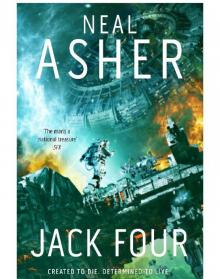 Jack Four
Jack Four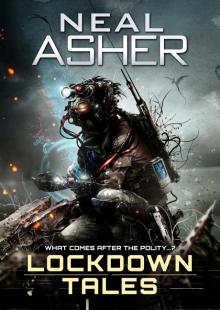 Lockdown Tales
Lockdown Tales The Warship
The Warship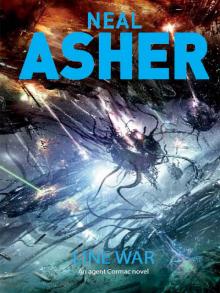 Line War
Line War Total Conflict
Total Conflict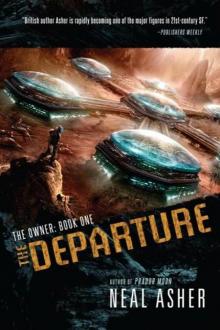 The Departure
The Departure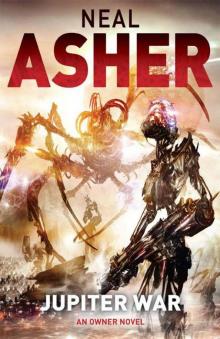 Owner 03 - Jupiter War
Owner 03 - Jupiter War Polity Agent
Polity Agent Prador Moon
Prador Moon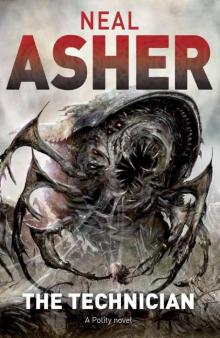 The Technician
The Technician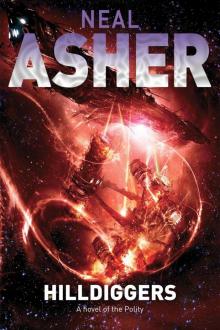 Hilldiggers
Hilldiggers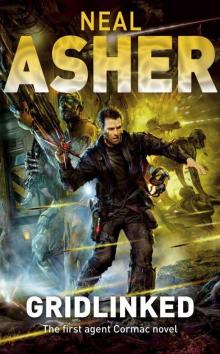 Gridlinked
Gridlinked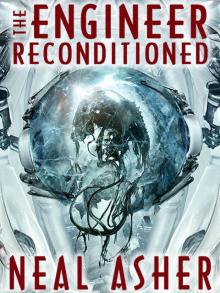 The Engineer ReConditioned
The Engineer ReConditioned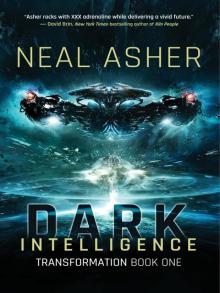 Dark Intelligence
Dark Intelligence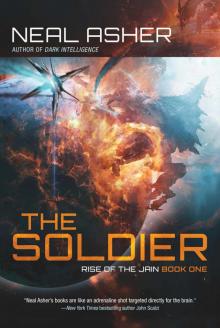 The Soldier: Rise of the Jain, Book One
The Soldier: Rise of the Jain, Book One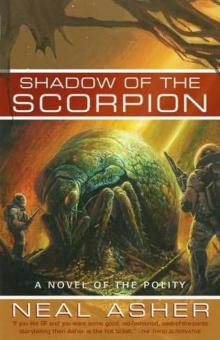 Shadow of the Scorpion p-2
Shadow of the Scorpion p-2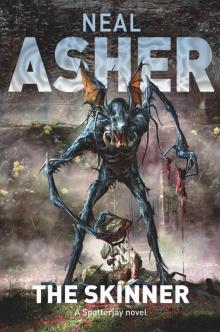 The Skinner
The Skinner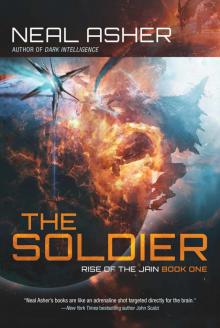 The Soldier
The Soldier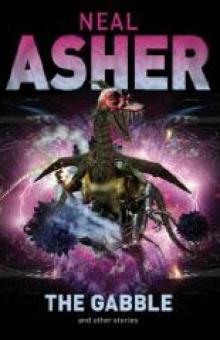 The Gabble p-13
The Gabble p-13 The Gabble and Other Stories
The Gabble and Other Stories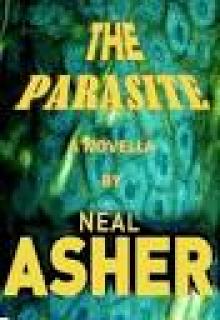 The Parasite
The Parasite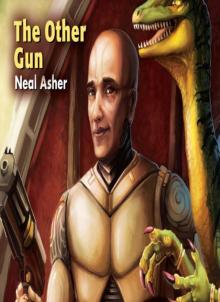 The Other Gun
The Other Gun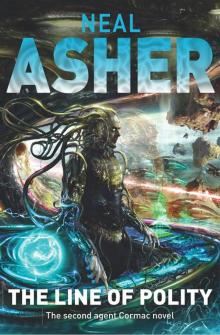 The Line of Polity
The Line of Polity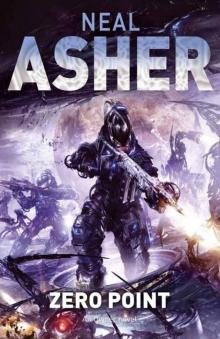 Zero Point (Owner Trilogy 2)
Zero Point (Owner Trilogy 2)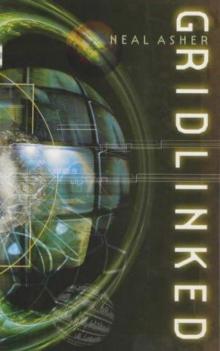 Gridlinked ac-1
Gridlinked ac-1 Prador Moon p-1
Prador Moon p-1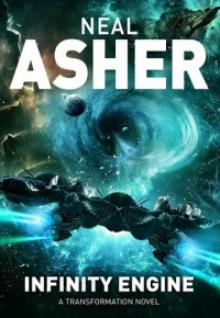 Infinity Engine
Infinity Engine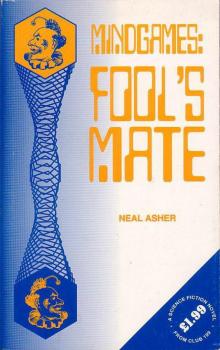 Mindgames: Fool's Mate
Mindgames: Fool's Mate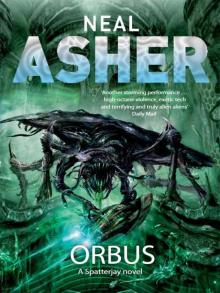 Orbus
Orbus Africa Zero
Africa Zero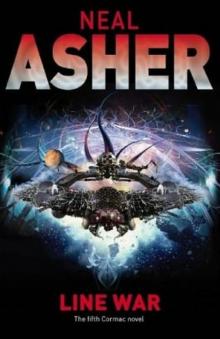 Line War ac-5
Line War ac-5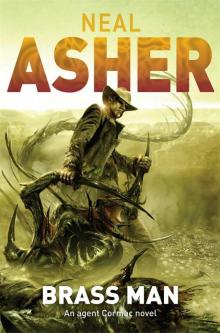 Brass Man
Brass Man The Departure to-1
The Departure to-1 Cowl
Cowl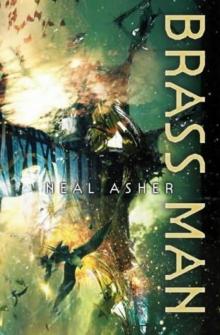 Brass Man ac-3
Brass Man ac-3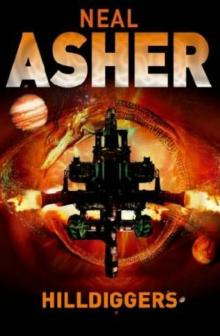 Hilldiggers (polity)
Hilldiggers (polity)![Greg Bear - [Eon Trilogy 1] - Eon (rescan) (v1.0) Read online](http://i1.bookreadfree.com/i2/04/08/greg_bear_-_eon_trilogy_1_-_eon_rescan_v1_0_preview.jpg) Greg Bear - [Eon Trilogy 1] - Eon (rescan) (v1.0)
Greg Bear - [Eon Trilogy 1] - Eon (rescan) (v1.0) The Skinner s-1
The Skinner s-1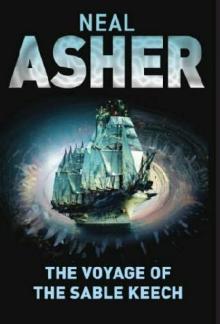 The Voyage of the Sable Keech s-2
The Voyage of the Sable Keech s-2 The Line of Polity ac-2
The Line of Polity ac-2 War Factory: Transformations Book Two
War Factory: Transformations Book Two Polity Agent ac-4
Polity Agent ac-4